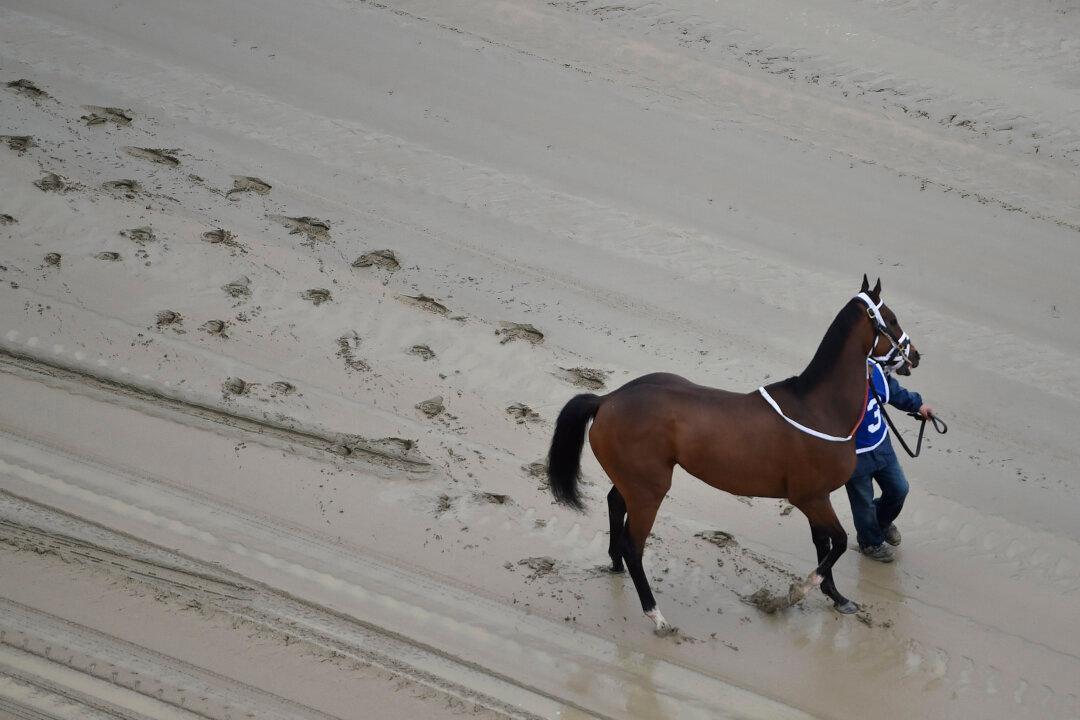Two horses died during undercard races of the famous Preakness Stakes at Pimlico Race Course in Baltimore on May 21.
Pramedya, 4-year-old filly owned by Gretchen and Roy Jackson, broke her left front cannon bone during the fourth race on the Preakness undercard, and was euthanized on the track. The filly’s jockey, Daniel Centeno, broke his collarbone in the spill that occurred on a turn of the race that was run on wet turf.
In the opening race of day, Homeboykris collapsed and died shortly after winning and having his picture taken in the winner’s circle. Pimlico officials believe the 9-year-old gelding suffered cardiovascular collapse. The horse was being taken to New Bolton Center in Pennsylvania for an autopsy.

Homeboykris ridden by Horacio Karamanos leads the field in a race prior to the 141st running of the Preakness Stakes at Pimlico Race Course on May 21, 2016 in Baltimore, Md. Patrick Smith/Getty Images





